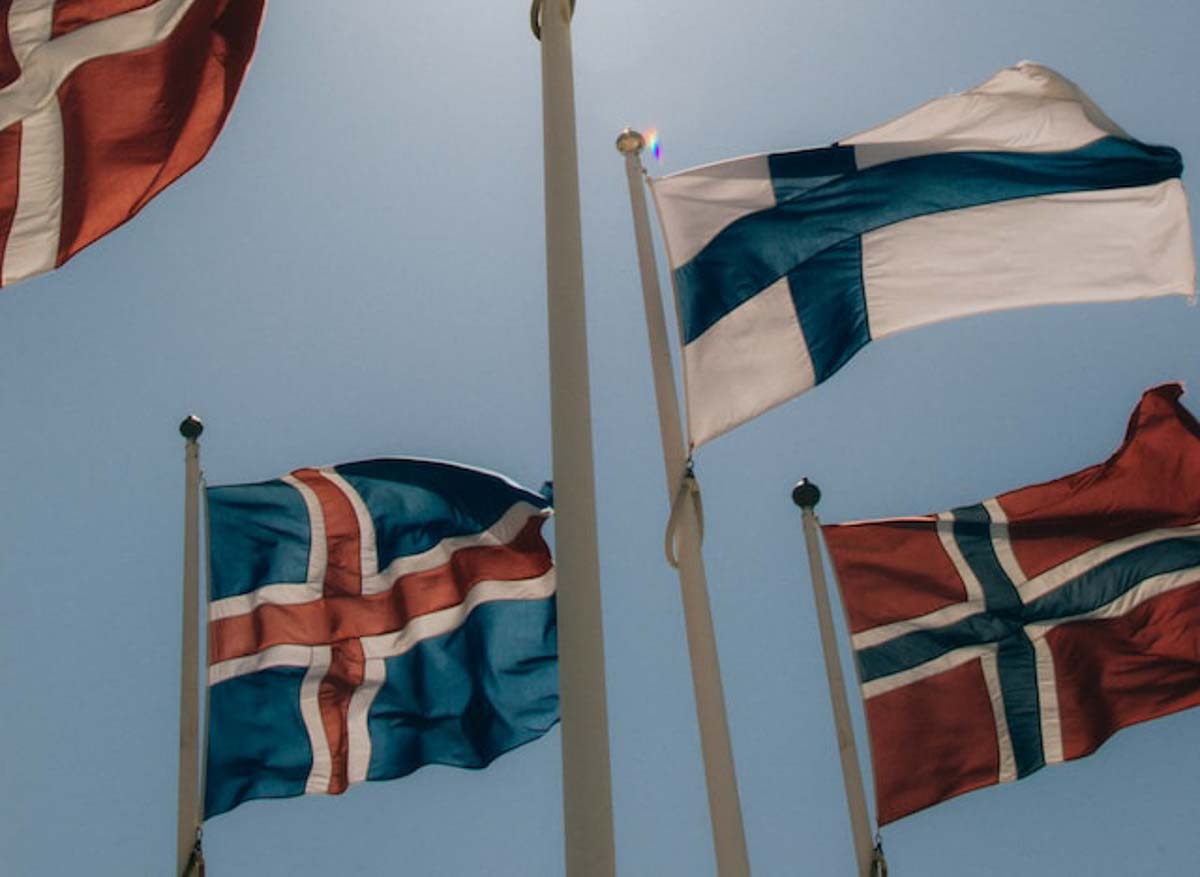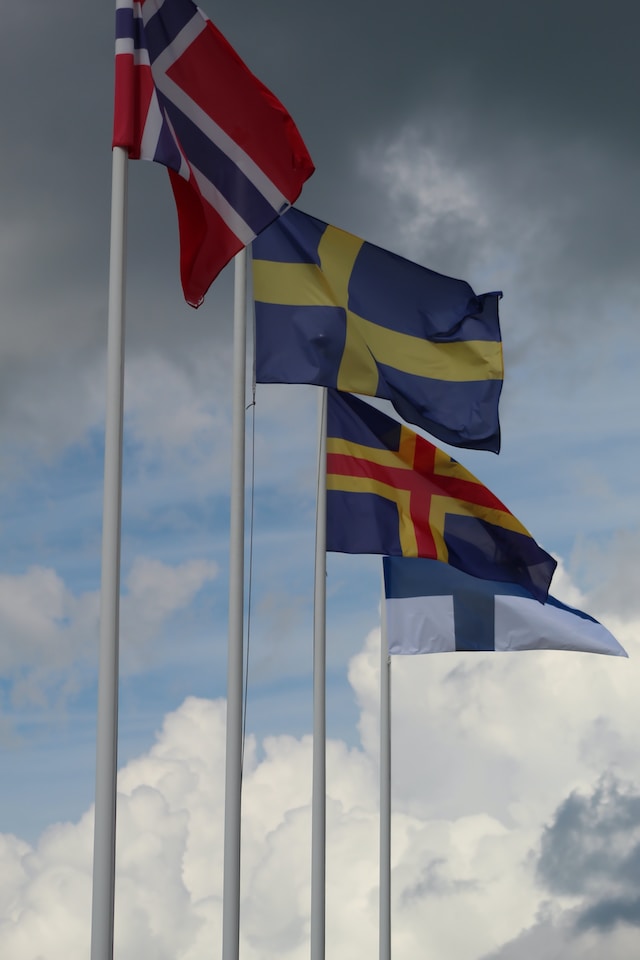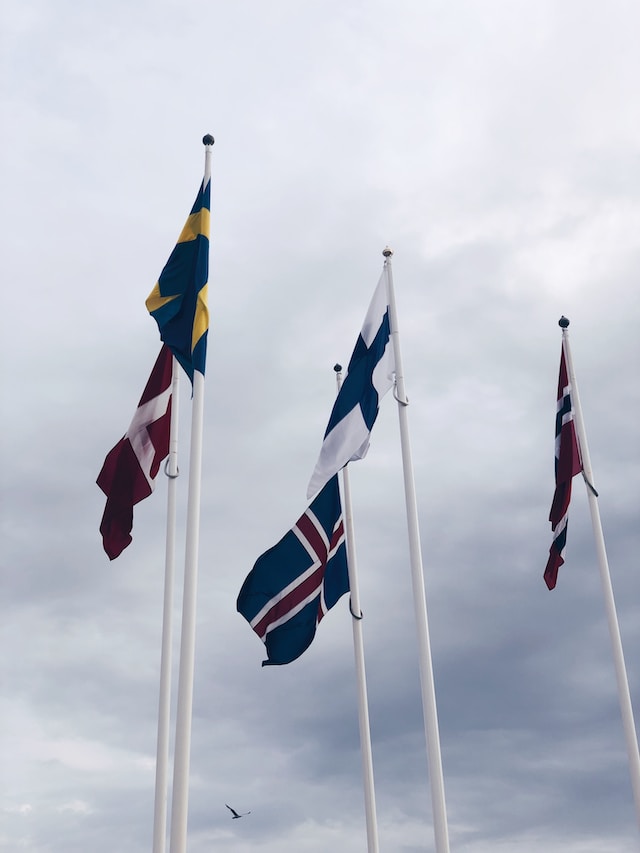
The Best Scandinavian Language To Learn
Scandinavia offers many things to those who are interested in it. Rich culture, history and traditions have shaped Scandinavia since the time of the Vikings, and this applies to the languages too. So which language is best to learn? Let’s find out!

Key takeaways
- Swedish, Norwegian and Danish (Icelandic and Faroese too)
- Plenty of similarities between the languages
- History and culture have shaped each language
- Immersion and conversation is key in order to learn a new language
- Norwegian is easiest to learn and has the greatest reaches.
Which Scandinavian Language Should I Learn First?
Scandinavia is a fascinating part of the world. With its unique culture, nature and languages (Danish, Swedish, Norwegian, Icelandic and Faroese), it’s a part of the world everyone should attempt to visit at least once. But Scandinavia comprises a pretty sizable corner of Northern Europe, and if you’re thinking of learning one of the Scandinavian languages, you might be wondering which one to start with. This will of course depend on your end goals, but it’s become an agreed upon assessment that Norwegian is the best one to start with.
The reason for this is that out of all the Scandinavian languages, Norwegian is the most “in-between” language of all of them. By this we mean that the language is sort of a middle point between Swedish and Danish. So, Norwegian is similar enough to Danish and Swedish to where it’s possible to communicate without speaking the other language.
Swedish and Danish on the other hand, are different enough that communication between their speakers becomes much more difficult. And we won’t bother mentioning Icelandic or Faroese, simply because these languages are so different from the other Scandinavian languages. So, if you’re looking for the language that gives you the biggest communicational reach in Scandinavia, Norwegian is the way to.
Norwegian is also the easiest language to learn for English speakers. Both Danish and Norwegian have borrowed plenty of words from English, however Danish pronunciation is harder to get a handle on than Norwegian for English speakers. Swedish also has many English loanwords, but also plenty from other languages like French.
We can say that out of all the Scandinavian languages, Norwegian is the closest to English. This is because of the wide array of overlapping vocabulary, its fairly straightforward pronunciation (though with some trickiness), and the similarities in grammar and syntax.

What Are The Similarities And Differences Between The Nordic Languages?
The Scandinavian languages, like English, are Germanic languages. This means that they share the same roots in the ancient Germanic language that was spoken thousands of years ago. The Scandinavian languages are even closer though, as they belong to the North Germanic branch of the Germanic language tree.
If you’re considering learning a Scandinavian language, you’re in luck as an English teacher. While there may be differences in how easy to learn they are for English speakers, they are all still relatively easy. The US department of state has them all placed as category 1 languages, meaning they are the easiest to learn, and require about 6-700 hours of study in order to reach professional level proficiency.
Though, while they share many similarities to English, there are also a whole lot of differences. Let’s take a look.
Danish
Danish and English vocabulary, you’ll find, have a great deal of overlap. The Danes love borrowing and implementing words from English into the language. So if you find yourself reading Danish, you’ll discover you already know a bunch of the words.
That is not to say you can communicate with a Dane using only English, but you will have some help with many of the same words.
The same applies to grammar. There are a bunch of differences of course, but for the most part, English and Danish grammar rules are pretty similar.
What makes Danish tricky for an English speaker, however, is the pronunciation. The Danes love to swallow the ends of words, and some vowel pronunciations do not exist in English.
Denmark does not have that many inhabitants, but their cultural influence internationally is on the rise. So if you’re looking for a Scandinavian language that is cool and hip, Danish might be the way to go. Just know that it won’t help you out in the rest of Scandinavia, except for in Norway.
Norwegian
We’ll be a bit biased here, as we are running a Norwegian school, but we think it’s safe to say that Norwegian is not only the easiest language to learn for English speakers, but also the most useful one.
Like Danish, the vocabulary and grammar has many similarities to English, but the pronunciation is far easier to manage. Some vowel-sounds might be a bit different, but for the most part, the language is pronounced like you would expect based on its spelling.
Along with this, being able to speak Norwegian will allow you to communicate with Danes as well as Swedes. Learning Danish or Swedish does not have the same 3 for 1 benefit. So unless you’re planning on living in either Sweden or Denmark, Norwegian is the way to go.
Swedish
Swedish pronunciation is not as tricky for English speakers as Danish is. However, some Swedish vowel sounds will be unfamiliar and hard to produce without plenty of practice.
Throw into the mix that Swedish has many more loanwords from French and German than English, and you’ll find that Swedish is harder for an English speaker to learn.
However, Sweden is the biggest country in Scandinavia, and probably the one that is most well known internationally. So for business reasons, or simply cultural relevance, learning Swedish is never a bad idea. It just wont come as quickly to you as Norwegian will.
Tired of scrolling through the internet for Norwegian grammar?
Start an organised Norwegian course now.
In order to learn fluent Norwegian, we need to repeat it and speak it several times before our brain learns it.
Learn that in our courses!
What Are The Cultural Aspects Of Each Scandinavian Language?

The Scandinavian languages all stem from Old Norse, which was the language spoken by the vikings. But after centuries of development and major historical events, the languages have evolved and diverted from each other.
Norwegian, for example, was under Danish rule for 400 years, and upon independence in 1814, quickly entered into a union with Sweden that lasted for close to 100 years. So Norwegian has been heavily influenced by both countries. In fact, the two official versions of written Norwegian we have today, Nynorsk and bokmål, are results of this.
Nynorsk is a sort of mix of various Norwegian dialects, while bokmål is a Norwegianization of Danish. Today bokmål is the most commonly used, though you’ll find speakers often have some dialectical variations in their spoken Norwegian.
Danish, on the other hand, is not as influenced by other Scandinavian languages as Norwegian is. It does the influencing. It is, however, influenced by English. Many loanwords from English have become part of the normal vocabulary in Denmark. Just take a look at these English words that have become part of contemporary Danish.
- Computer
- Weekend
- Smartphone
- Fitness
- Marketing
Sweden, like the rest of Scandinavia, ranks high in terms of equity and flat social structures in society. This has also made its way into the language. There are not many honorifics, and informal pronouns are used for addressing and speaking to anyone, whether they be your friend or your boss.
Swedish culture is also known for its simplicity and clarity. Just think of IKEA! This also is also seen in the language, as the grammar and spelling is pretty straight forward, at least for English speakers.
What Factors Should Be Considered When Choosing A Nordic Language To Learn?
If you’ve decided to learn a Scandinavian language, but you’re not sure which one to go for, there are some factors you should consider. These are personal interests and goals, travel or work opportunities and which resources you have available.
It will of course depend on your goals. Even though Norwegian has the honor of being touted as the easiest to learn, Swedish and Danish are not much harder for an English speaker. So if you have a particular interest in one of the Scandinavian countries or you plan on working in one of them, then you should obviously go for that one.
If, on the other hand, you plan on visiting multiple Scandinavian countries, but only have time to learn one, go for Norwegian. This will allow you to get by in every country. Learning Danish, for example, will not help you in Sweden, and vice versa. But Norwegian can be understood all over Scandinavia because of its middle child status.
Lastly, you should check out which resources you have at your disposal. The internet is filled with good resources, and all the Scandinavian languages are very popular given their relative sparse population.
One thing you will need though, are speaking partners. So if you’ve decided to learn Norwegian, why not check out our conversation courses here! You’ll get to speak Norwegian the way Norwegians speak it, make connections with other learners, and have a native teacher helping you out the whole way.

Reach fluent Norwegian in only 4 months
Find out your level and how to get started now
Did you know that you don’t need all the Norwegian grammar to speak Norwegian? Just a small part of it. In our classes we use just the necessary grammar. Find out what level you are, and what classes you can take to speak fluently.
Learning Tips And Resources
Learning any language takes time and effort, no matter how easy they have a reputation for being. The path to learning one of the Scandinavian languages is pretty much the same for all of them, so we won’t bother making the distinctions here.
A great starting point is to use one of the many language learning apps like Duolingo or Babbel. They all offer lessons in the Scandinavian languages, and it will help you learn the basic vocabulary and grammar rules. This is a great way to get started and see progression.
Firstly, you’ll want to immerse yourself in the language as much as possible. This can be done by listening to podcasts, music or books on tape. You can also set subtitles or speech on Netflix to the language you’re learning. (where available, Scandinavian countries don’t usually dub foreign TV-shows or movies).
You also need to practice EVERY SINGLE DAY. Go over stuff you think you already know again and again to make sure you don’t forget. Try to also label things around your home with post-it notes in the language you’re learning to make it second nature.
You can try talking to yourself as you go about your daily tasks. Say “Jeg drikker kaffe” as you drink your coffee for example. But most important, find others to speak with. Are there any native speakers in your city you can meet up with? Join an online conversation class (here), and learn by forcing yourself to speak the language.
Throughout the whole process, try to track your progress too. It might feel like you’re getting stuck the further you go and the more difficult it gets, so it’s nice to be able to look back at some of your earlier work and see how far you’ve actually come.
Understanding Other Scandinavian Languages
By now you know that the Scandinavian languages all derive from the Old Norse, so there are quite a lot of similarities, But just how similar are they? And can speakers of one language communicate with speakers of another?

Can you understand Swedish if you speak Danish?
For the most part, Danes have a hard time understanding Swedish. Not only is the pronunciation very different, but the spelling and vocabulary varies too. Some things will be understandable, but expect a lot of what? and can you repeat that?
Is it better to learn Danish or Norwegian?
If you’re moving to Denmark or Norway, or have a specific interest in either country, then go for the language spoken there. But if it’s more of a general interest in Scandinavia that brings you here, then Norwegian will be the best bet. It’s a bit easier for English speakers, and it will let you communicate with Swedes and Danes too.
Learn fluent Norwegian in 4 months. Start today.
Did you know that you don’t need all the grammar to speak fluent Norwegian? In our classes we focus just on the necessary vocabulary. So you can learn 3 times faster.
Other Nordic Language Options: Icelandic And Finnish
The other Nordic languages, Icelandic and Finnish (Faroese is so small we’re not including it here), might also be worth a quick look. They are very different from the rest of the Scandinavian languages though, so we often separate them.
Icelandic
Iceland is more isolated than the rest of Scandinavia. Because of this the language has had a different path since the time of the Vikings than Norwegian, Danish and Swedish. In fact, they still use much of the same vocabulary and spelling as the Vikings did.
It is much harder to learn because of this. The pronunciation will be hard to grasp. Words are longer, grammar more complex, and spelling more confusing for English speakers. It is a category 3 language according to the US department of state, while the others are category 1.
Additionally, very few people speak Icelandic. The country has just under 400 000 inhabitants, so the language is not as useful.
Finnish
Unlike the Scandinavian languages, Finnish is not a Germanic language. It is an Uralic one. So it does not share common roots with any of the Scandinavian languages. Because of this it will be hard for English speakers to learn. The grammar, pronunciation, spelling and syntax will all cause major headaches for learners.
It is worth noting that Finns learn Swedish in school though. This is because of the countries close historical ties. As such, learning Swedish will give you access to communicate with Finns.
Can We Learn Multiple Scandinavian Languages At The Same Time?
If you have an overall interest in Scandinavia, you might want to learn some or all of the languages. But can you do this simultaneously?
Ordinarily, we would recommend against learning multiple languages at the same time. It can be done, but in order to reach fluency quicker, you need to focus your attention. Scandinavian languages are similar enough that a lot of overlap will occur when you learn one of them.
As stated before, Norwegian is the middle child in Scandinavia, and the language is adapted out of both Danish and Swedish. So learning Norwegian will give you an entry way ticket to all of Scandinavia in a way that the others won’t. So that would be our suggested starting point to you.

Learn fluent Norwegian from your level
Check your level now, and find the right course for you
Our classes has native Norwegians who knows how it feels to learn a language, and will do everything to help you.
Moving To A Scandinavian Country
Moving to a Scandinavian country may appeal to you. After all, we all rank among the best countries to live in year after year. But that may be easier said than done.
The easiest way is to get a student visa. Universities are free, and you’ll be allowed to stay for as long as your degree lasts. Additionally, you can stay a little while longer as you try to get skilled work. But unfortunately, getting permanent residency without having skilled work is rather difficult.
No matter where you end up, you will find that Scandinavians all speak English close to fluently. So don’t worry if your language skills aren’t up to snuff in the beginning, as you can get by with English without problems.
Frequently Asked Questions About The Best Scandinavian Language To Learn
Which Scandinavian Language Should I Learn First?
It depends on your reason for learning. If you’re moving to or have a special interest in one of the countries, then learn that language first. If it’s a more general interest in Scandinavia, learning Norwegian will be easiest and allow you to speak with Danes and Swedes too.
What Factors Should Be Considered When Choosing A Scandinavian Language To Learn?
Consider your goals for learning the language. Are you planning to work or live in one of the countries? Then learn that language first. Think about what resources you have available to you as well, as they may differ.
Is It Better To Learn Danish Or Norwegian?
Norwegian is slightly easier to learn than Danish and will have great transferability to Danish. But if you’re moving or working in Denmark, Danish is better for you.
Learn fluent Norwegian in 4 months. Start today.
Did you know that you don’t need all the grammar to speak fluent Norwegian? In our classes we focus just on the necessary vocabulary. So you can learn 3 times faster.
